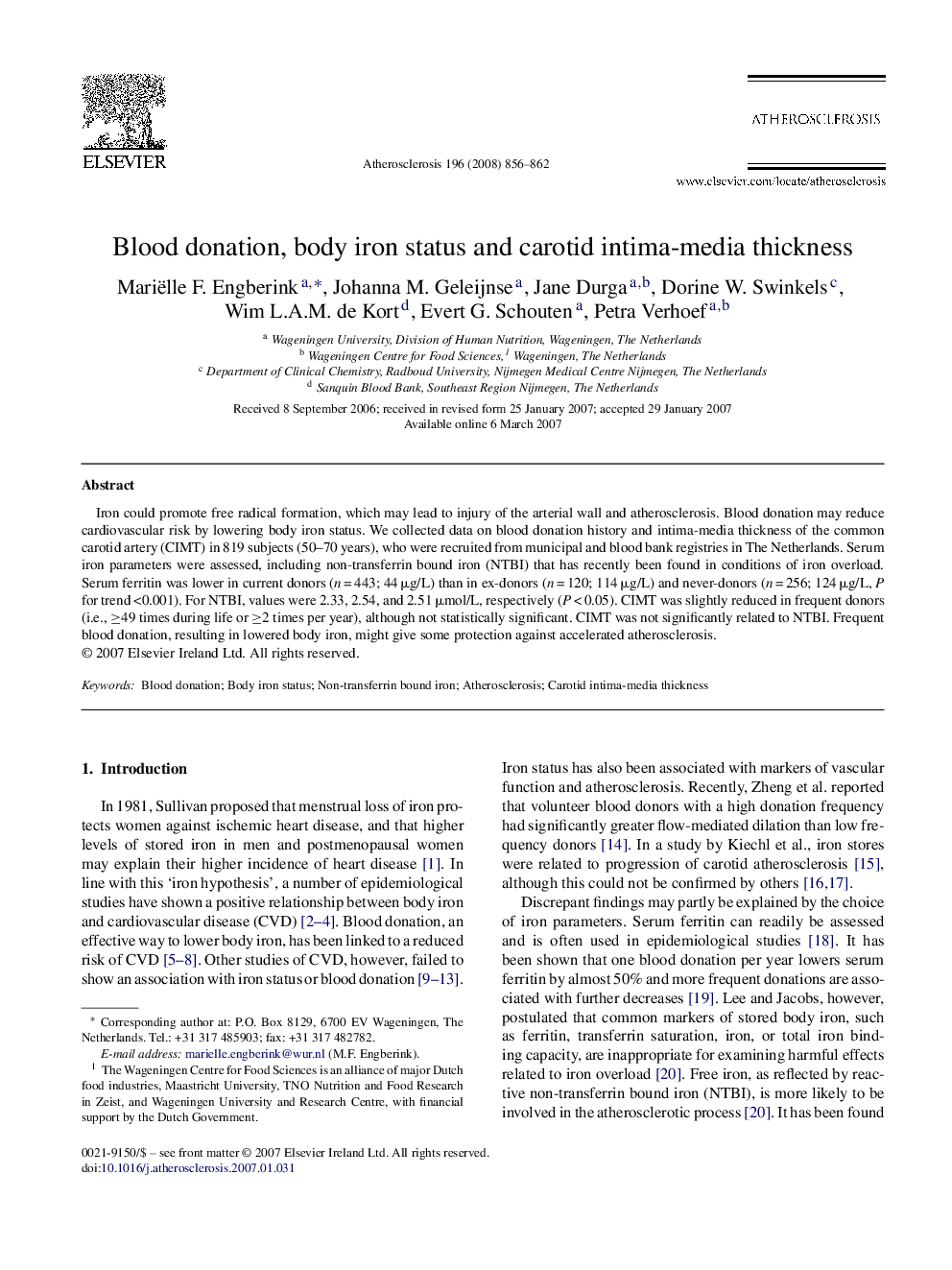| Article ID | Journal | Published Year | Pages | File Type |
|---|---|---|---|---|
| 2894059 | Atherosclerosis | 2008 | 7 Pages |
Iron could promote free radical formation, which may lead to injury of the arterial wall and atherosclerosis. Blood donation may reduce cardiovascular risk by lowering body iron status. We collected data on blood donation history and intima-media thickness of the common carotid artery (CIMT) in 819 subjects (50–70 years), who were recruited from municipal and blood bank registries in The Netherlands. Serum iron parameters were assessed, including non-transferrin bound iron (NTBI) that has recently been found in conditions of iron overload. Serum ferritin was lower in current donors (n = 443; 44 μg/L) than in ex-donors (n = 120; 114 μg/L) and never-donors (n = 256; 124 μg/L, P for trend <0.001). For NTBI, values were 2.33, 2.54, and 2.51 μmol/L, respectively (P < 0.05). CIMT was slightly reduced in frequent donors (i.e., ≥49 times during life or ≥2 times per year), although not statistically significant. CIMT was not significantly related to NTBI. Frequent blood donation, resulting in lowered body iron, might give some protection against accelerated atherosclerosis.
